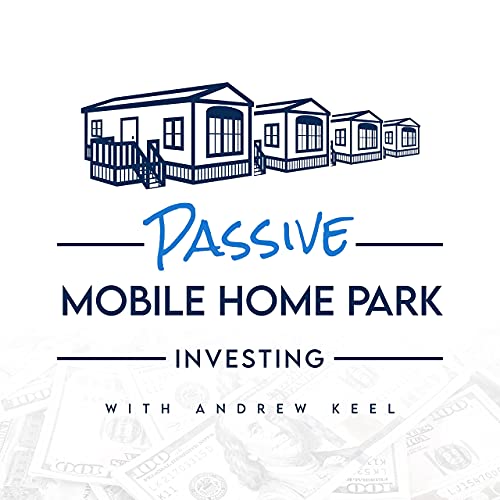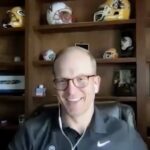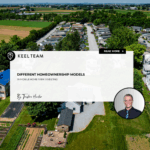Top Risks: Mobile Home Parks In Tertiary Markets
-
 Andrew Keel
Andrew Keel
SHOW NOTES
Welcome back to another episode of The Passive Mobile Home Park Investing Podcast, hosted by Andrew Keel!
In today’s episode, Andrew Keel continues his insightful mini-series on some of the top risks involved in mobile home park investing. This episode zeroes in on the risks specific to investing in mobile home parks in tertiary markets—areas with smaller populations that can offer both unique opportunities and significant challenges for trailer park investors.
Andrew Keel breaks down the specific risks associated with mobile home park investing in tertiary markets, ranging from limited infrastructure to economic instability, and offers actionable strategies to potentially mitigate these risks.
Key Points Covered in This Episode Include:
- Low population density and the impact of reduced demand in tertiary mobile home park markets
- How the distance from key amenities can affect the value and performance of mobile home park investments
- Challenges of selling mobile homes in small towns, and effective strategies to overcome these obstacles
- Longer travel times for mobile home park owners and operators, and how this impacts management efficiency
- The difficulty of finding reliable service providers and contractors in remote areas
- The financial risks of infill costs in mobile home park investments in less populated regions
- Limited options for utility companies, and how this can complicate mobile home park operations
- Public transportation limitations in tertiary markets and their effect on tenant demand and mobile home park investing success
If you’re thinking about mobile home park investing in tertiary markets, it’s crucial to understand these risks and how to navigate them effectively.
Whether you’re a seasoned mobile home park investor or just starting your passive investing journey, this episode offers valuable insights to help you make informed decisions and manage the complexities of investing in mobile home parks located in tertiary markets.
Tune in now to learn how to evaluate and manage these investment risks, protect your assets, and potentially achieve long-term success in mobile home park investing!
***Andrew Keel and Keel Team Real Estate Investments (Keel Team, LLC) do not endorse any interviewee. This interview is for informational purposes only and should not be depended upon for investment purposes. ***
Andrew Keel is the owner of Keel Team, LLC, a Top 50 Owner of Manufactured Housing Communities with over 3,000 lots under management. His team currently manages over 40 manufactured housing communities across more than 10 states. His expertise is in turning around under-managed manufactured housing communities by utilizing proven systems to maximize the occupancy while reducing operating costs. He specializes in bringing in homes to fill vacant lots, implementing utility bill back programs, and improving overall management and operating efficiencies, all of which significantly boost the asset value and net operating income of the communities. Check out KeelTeam.com to learn more.
Andrew has been featured on some of the Top Podcasts in the manufactured housing space, click here to listen to his most recent interviews: https://www.keelteam.com/podcast-links. In order to successfully implement his management strategy, Andrew’s team usually moves on location during the first several months of ownership. Find out more about Andrew’s story at AndrewKeel.com.
Talking Points:
00:21 – Introduction: Welcome to The Passive Mobile Home Park Investing Podcast
01:50 – Risks of low population density and reduced demand in tertiary mobile home park markets
02:30 – Impact of distance from key amenities in small, tertiary mobile home park markets
03:00 – Challenges and strategies for marketing and selling mobile homes in small towns
04:30 – Longer travel times for mobile home park owners and operators in tertiary markets
05:40 – Difficulty finding service providers and contractors in remote areas
06:30 – Infill costs and the financial risks involved in tertiary market mobile home parks
07:15 – Limited options for utility companies in less populated regions and the impact on mobile home park utilities
08:52 – Public transportation issues in tertiary markets and their impact on mobile home park tenants
SUBSCRIBE TO PASSIVE MOBILE HOME PARK INVESTING PODCAST YOUTUBE CHANNEL https://www.youtube.com/channel/UCy9uI3KGQmFgABsr9lUtRTQ
Links & Mentions from This Episode:
Keel Team’s official website: https://www.keelteam.com/
Andrew Keel’s official website: https://www.andrewkeel.com/
Andrew Keel LinkedIn: https://www.linkedin.com/in/andrewkeel
Andrew Keel Facebook page: https://www.facebook.com/PassiveMHPinvestingPodcast
Andrew Keel Instagram page: https://www.instagram.com/passivemhpinvesting/
Twitter: @MHPinvestors
TRANSCRIPT
Hey, there. Welcome to the Passive Mobile Home Park Investing Podcast. This is your host, Andrew Keel. Today, we’re going to continue our series on risks and different risks that you need to be aware of when looking to invest passively into a mobile home park, or if you’re looking to buy a mobile home park yourself. You just need to consider these things.
When I first got started, I was following Frank and Dave’s method from the MHU Bootcamp. He said to focus on the Midwestern markets. There are more mom and pops there. There are better cash flowing opportunities, better deals, so that’s what I did. One thing that, looking back in my early days of starting out, is we were buying in tertiary markets. What we’re going to talk about today is the risks associated with buying in tertiary markets.
From my experience, I’ve done this. I’ve made mistakes. I’m going to share some of the hurdles that we came across in one-horse towns. We own one park where literally there’s one large employer, like a meat manufacturing plant. During Covid, for example, it was a really tough time. That was the one part where collections were the worst because there was only one employer for literally 80% of our tenants.
I’m going to talk about tertiary markets and just all the factors that go into this. Number one, you’re going to have a lower population count. You start at the top of the funnel. If you have a lower population, there’s only going to be so many people looking for housing at any given time.
That will lead to number two, lower demand for housing. You see it on the news all the time. There’s a lot of demand for affordable housing. However, if you’re in the middle of nowhere, and there are not a lot of employers around, there’s not going to be a lot of demand. You’re going to have to get more creative, and this is something where I’ve been guilty of. Buying parks in tertiary markets, you have to get more creative. We’re going to talk about that a little bit later as well.
Number three, there’s the longer commute time. We own two parks in Crookston, Minnesota. Crookston has some things going for it, including a university there, but most people commute. We found out when we were talking to our residents, most people commute to Grand Forks, which is about 30–35 minutes directly west. That’s a long commute for people to get places to get to that big city feel where they have a movie theater, they have a Starbucks, they have some of those more common amenities that a bigger city has. That’s really important.
Number four, this goes back to the lower demand for housing. In Crookston, Minnesota, the first two years we owned that property, we were doing a lot of infill, and we were trying to sell a lot of homes. The traditional way to sell mobile homes is on Facebook Marketplace. To this day, that’s where we get 90% of our leads for mobile homes we are selling. However, in this microcosm of a small town market in Crookston, Minnesota, we had to get hands on.
We started talking to local people that live there, local realtors, other property management companies, and it turned out that the top two marketing methods were bandit signs, which we had to default to when Facebook marketplace wasn’t working.
Also, there’s a classifieds page done by the local newspaper. There’s a Crookston newspaper that has a classifieds page as part of their website, and that’s where people go to buy and sell things. And it’s not on Facebook Marketplace in this one town.
In these smaller towns, you can’t just assume that they’re going to be the same as anywhere else. You have to really get local, talk to people, and understand the different nuances of that market. That’s just something that could be additional work, time, and effort to need to figure out what works in that specific area within tertiary markets.
Number five, it’s harder and it takes longer to get to your onsite visits. We visit every mobile home park every quarter. If we don’t, it’s because something crazy is going on like Covid or something. But you have to get to your parks, to get hands-on to see what they look like. The drive-through videos can only show you so much. When it’s harder to get somewhere because there’s not a big airport nearby, it’s typically more expensive to get there, and it takes longer.
We own two parks right now in northern Minnesota, not the Crookston ones. This is more northern than that. Roseau, if those of you that know Minnesota. It’s a small tertiary market, and it takes forever to get to. You literally have to fly in probably to Fargo or Grand Forks, and then you have to drive multiple hours to get to it. It’s harder to get to, and that’s been one of our pain points with that deal.
Number six, another issue with tertiary markets is it’s harder to find contractors and service providers just to do common things like plumbing repairs and so forth. There’s one plumber in the whole town. If he goes on vacation, you’re trying.
We have this one park in Denison, Iowa. There’s one plumber that services the mobile home parks around there. If he’s not answering his phone for whatever reason, and we have an issue with our lift station or with our water lines, it’s a big issue. Then we’re like trying to call people from Omaha, get them to drive up, and it’s more expensive. A big one right there is it’s harder to find contractors in tertiary markets.
Number seven, it’s more expensive when you’re doing your capex projects like infill, and you’re trying to fill a vacancy. You have to go further away to find homes to bring in, whether they’re used homes or new homes, because with new homes, the manufacturer’s plant is typically going to be further away. They’re not going to be in a tertiary market where they’re building the homes. It’s going to be in Elkhart, Indiana, where it’s close to Chicago and it’s in a hub for a reason. Very important to make sure that you’re budgeting that.
Also, you do a test ad before you bring the homes in so you know, I did a test ad, I got at least 10 people that reached out and had the down payment money before I go and infill and bring in a bunch of homes. That is a deal killer. You got to do the test ad.
Another one is there are fewer utility company options. One park of ours that comes to mind, this one in Denison, Iowa that I told you about, the power bill is very expensive. The power company, basically it’s a one-horse town. It’s a monopoly, and you have to use this one company for a single mobile home to have a $300 power bill every month. It limits what we can charge for lot rent and so forth because it still needs to be affordable. There are weird situations like that where you have limited utility options.
We have another park in Crookston, Minnesota that I told you about, and it has propane tanks on every lot. We need to get a propane company to come out and deliver propane and refill up our tanks. That company is in Grand Forks, which is 35 minutes away. In order for them to come out to the park, they have to fill up at least two tanks, and the minimum bill that they’ll make it worth the trip has to be $600.
Working that out is pretty complex, all the logistic components where we have to tie up two tenants that need gas at the same time. What if it’s in the middle of winter and you run out of propane? Now your home is getting cold. You can just imagine all the issues that come with that. It can be more expensive for your propane. You may have service providers that are further away, and it’s tougher for them to come out. You have to hit a threshold.
Number 10, there’s little to no sufficient public transportation. With affordable housing, our tenant base is most vulnerable. They typically need public transportation to get to their jobs. With the more of a reliance on cars in tertiary markets, that’s difficult because cars are expensive. They’re expensive to maintain, and you need to consider this if you’re buying mobile home parks in tertiary markets.
Another one, the day to day needs, we touched on this earlier, but health care, pet care, home maintenance supplies, and car care, all of those are going to be a little bit harder to fulfill in tertiary markets. They may have to, again, commute a half hour or more to get to a bigger hub that has those big box stores.
Outside of that amenities, like we talked about earlier, like Starbucks or organic food stores or less of that in tertiary markets, obviously. I can see where it would be less desirable to have fewer options in these markets, let alone the cities themselves. It may not have this big of a budget for their parks and recreation, their playgrounds, their cultural activities or events, and museums, where a bigger town would have that. It could bring potentially a higher quality of life.
The last one, the big risk of buying parks and tertiary markets, I think you should always have the end in mind. Our model is to buy, fix up, and then refinance into agency debt. Agency lenders typically won’t finance mobile home parks that are in tertiary markets. They themselves are staying away from those deals and that’s agency debt. That’s Fannie Mae, Freddie Mac, non recourse. I’ll say that again, non recourse debt, which is really attractive, terms-wise. Also for your balance sheet, but they won’t finance those in tertiary markets, so you have to be aware of that.
It’s always good to ask up front during due diligence. Ask your loan broker, can you run this by Fannie? Can you see if they would finance this deal in this market XYZ to make sure that you’re considering when you’ve added the value, how you’re going to exit? Are you going to have to just use the local bank that’s going to require recourse debt and is going to have not as good of terms? That may be your only option in a tertiary market.
Anyway, if you got value out of this, I would really appreciate it if you left us a review. I read every single one of those and they mean the world to me. Thank you so much for watching and have a great day.
Andrew Keel
View The Previous or Next Post
Subscribe Below 👇





